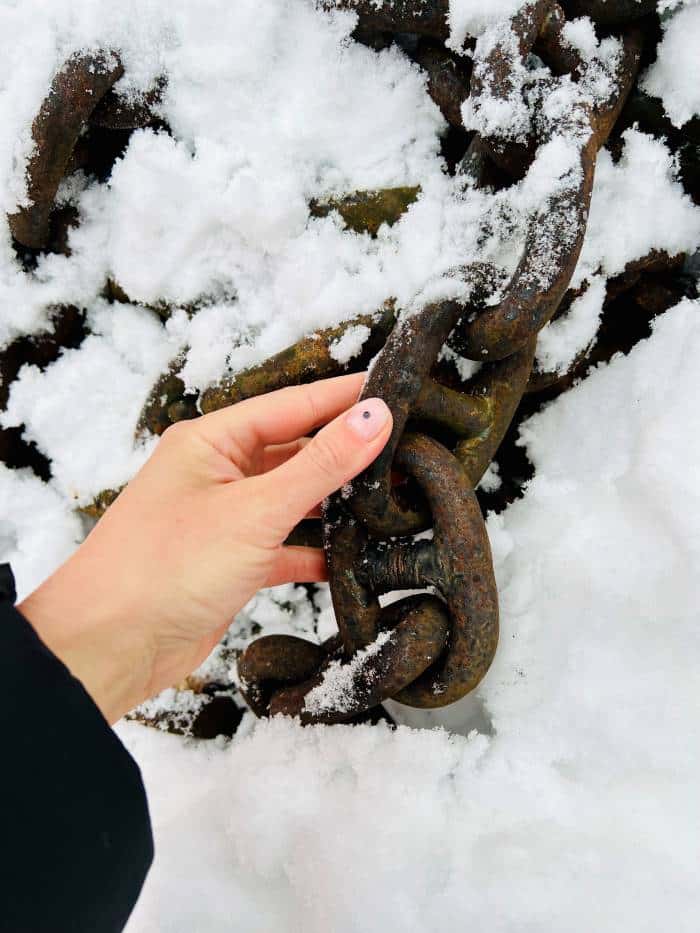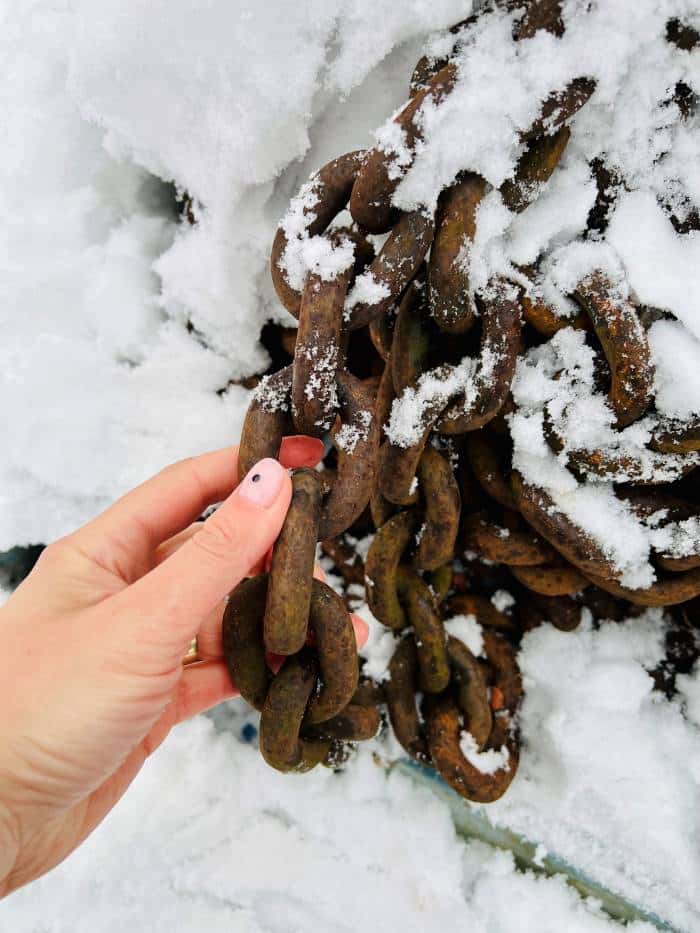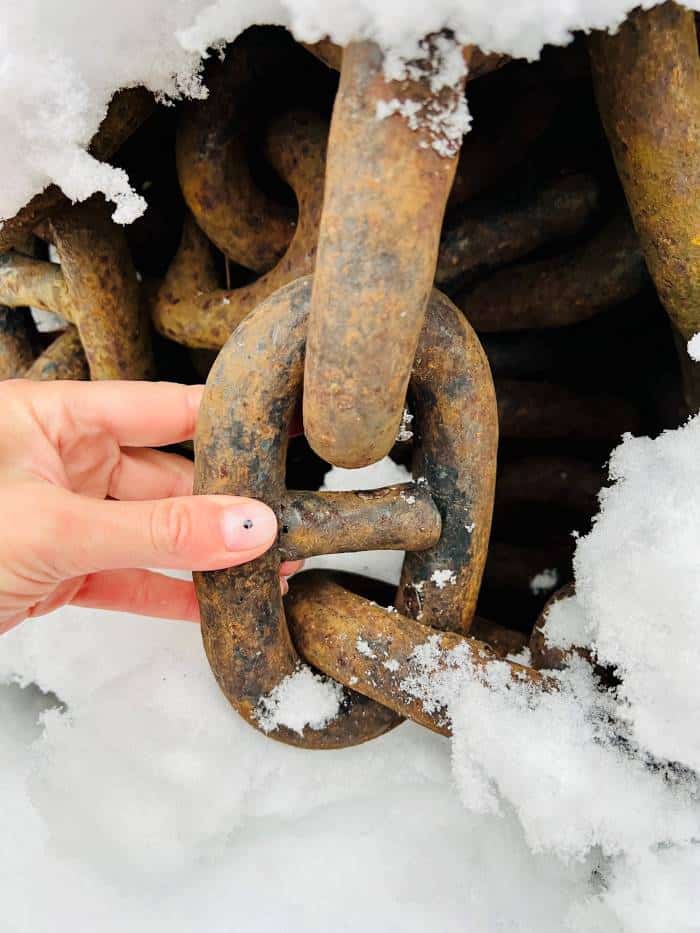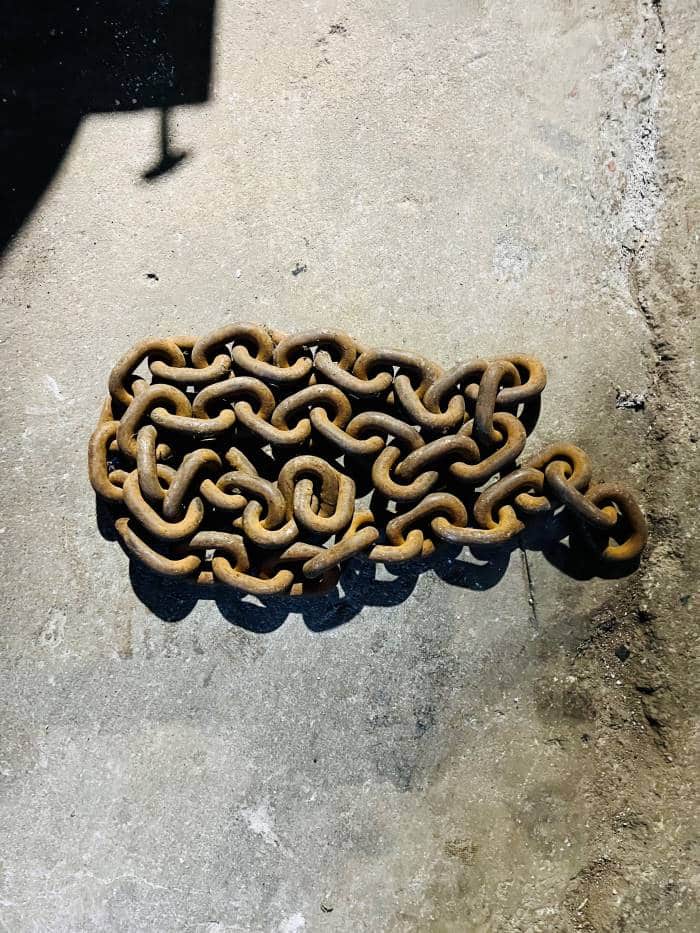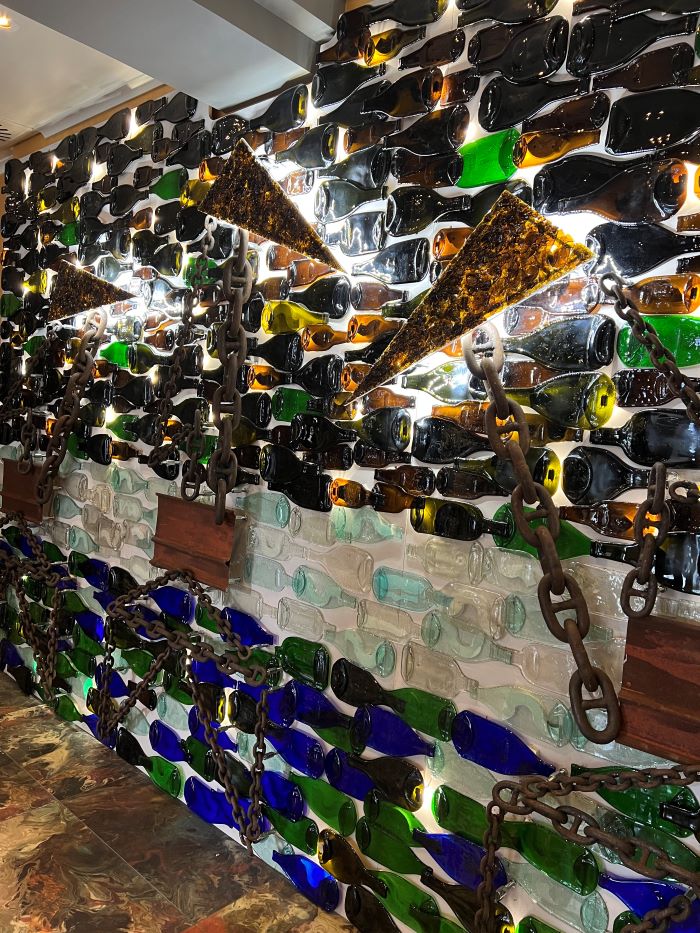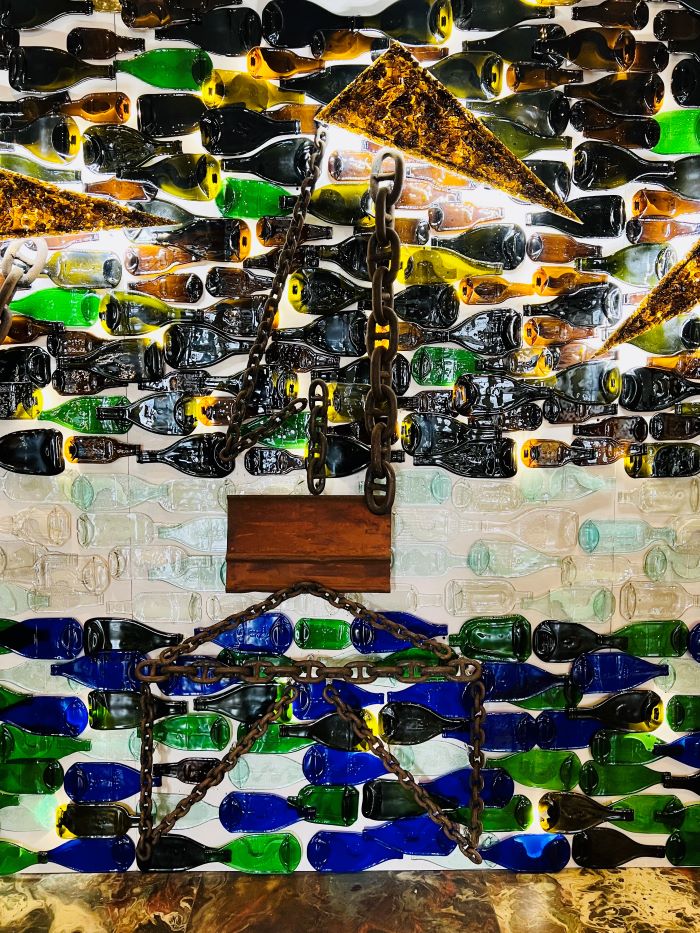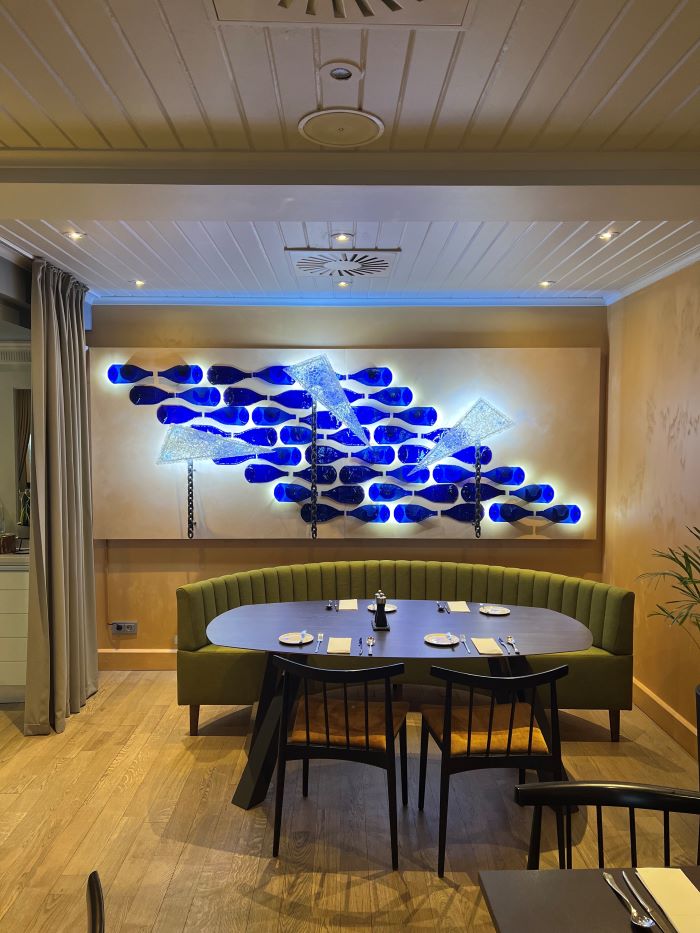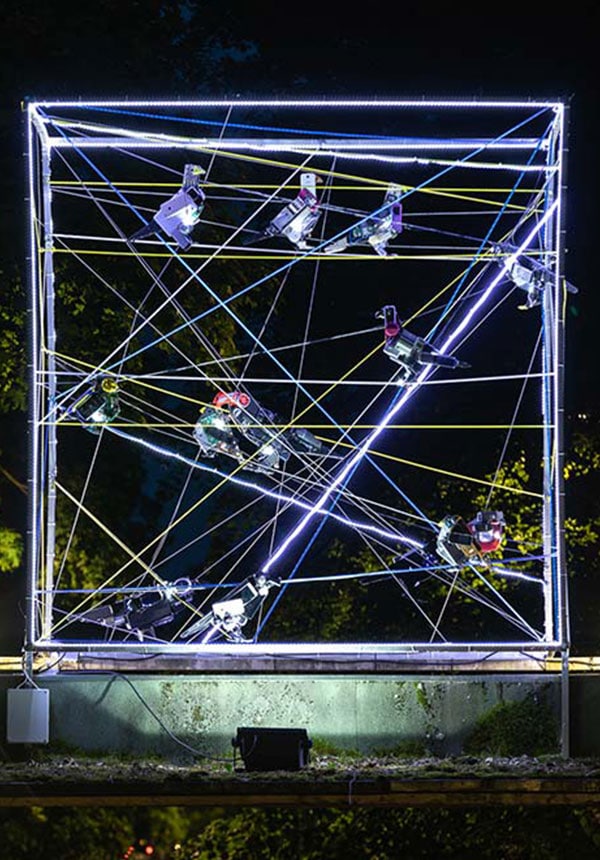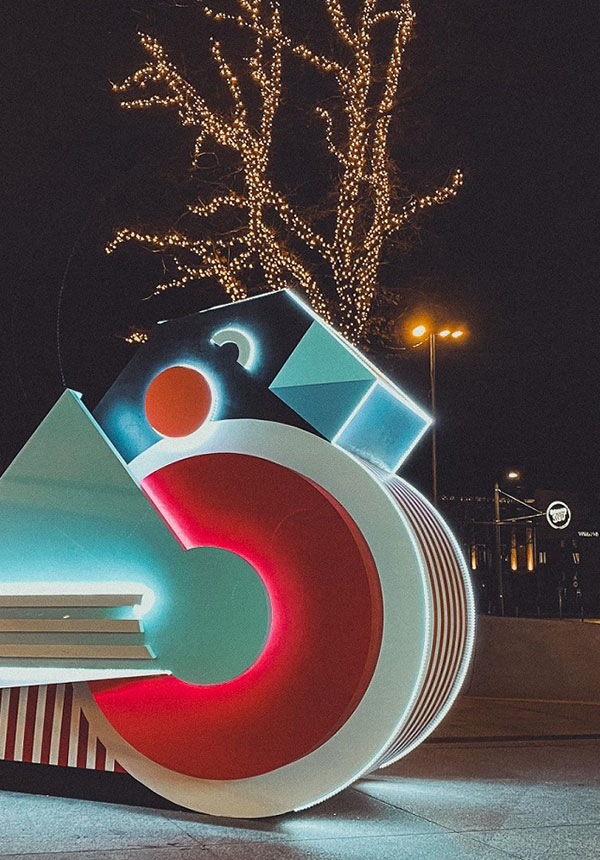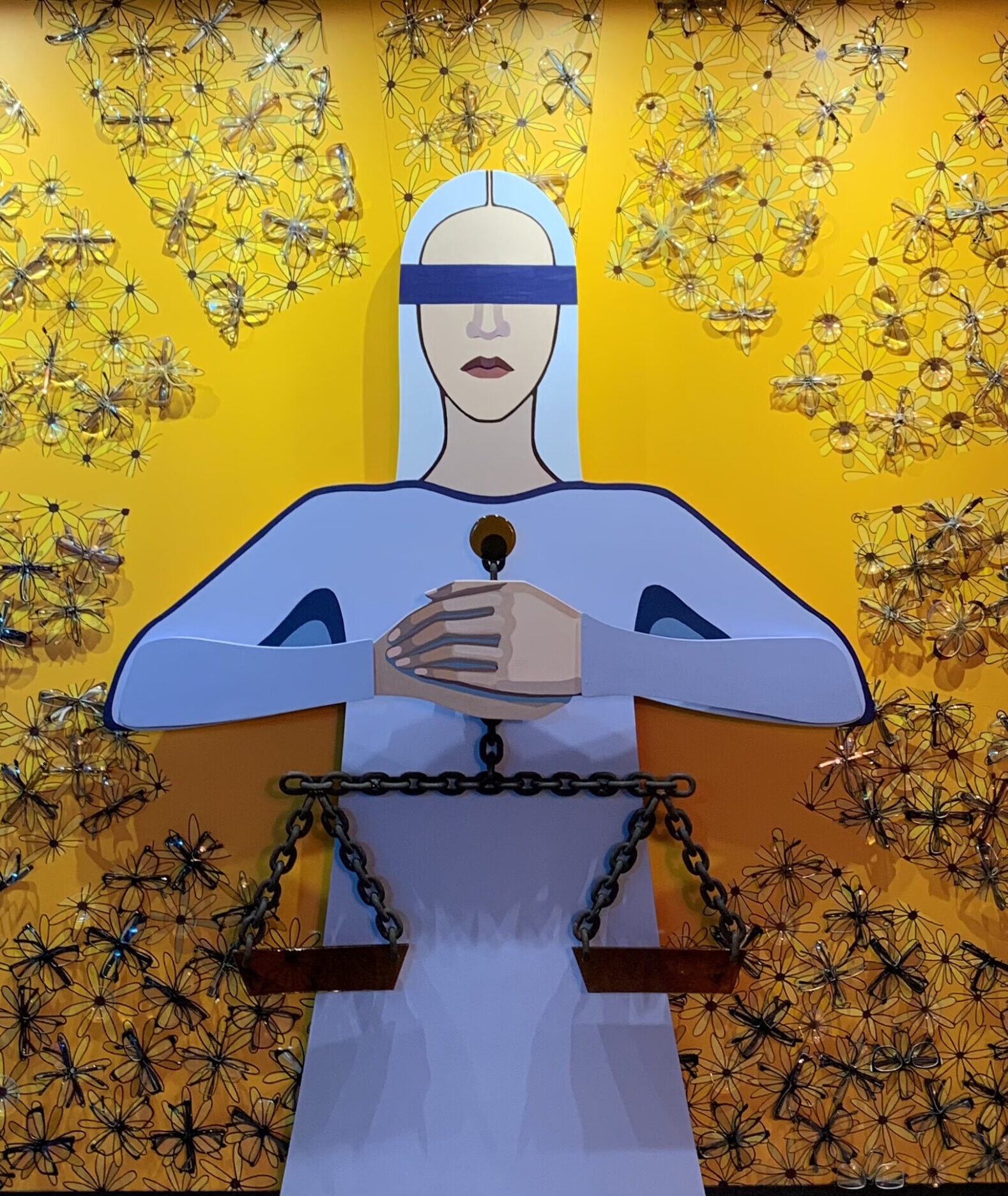Waste art: art installation from used bottles ‘Cranes’
The artwork consists of four installations. They are permanently exhibited in a 200 sq. m space in the lobby and restaurant of the Hotel Mercure, in Klaipeda. Each installation is unique, yet connected to the others.
Klaipeda is my hometown. I am fascinated by the clear and easy-to-understand layout of this city. It has three main arterial streets built parallel to each other. Smaller streets form a capillary network between them, carrying the life-blood of the city. Klaipeda is a port city, with the seaport stretching along its entire length . The sea is an integral part of the city. It forms the basis of my fondest childhood memories.
As an artist I try to connect the singular, exceptional elements of the city. For example, the respective works in the “Cranes” installation bring the glittering sea and busy port to mind.
All the materials used in creating the Cranes installation are industrial waste and scrap metal, which I collected while walking around the embankment building site.
I did not choose glass as a medium by accident; I think it creates an impression of water and waves in the sea. I tested a new technique for this specific waste art installation. The used bottles were melted in an oven at a temperature of 1000’C. Six hundred bottles were used for the four pieces in the installation. I did not know the right method for melting glass at the time, but improved my skills by working with some masters in the art of stained glass. After many experiments, I finally realized that it took two days to melt a bottle in order to achieve the precise results I wanted.
The process is extremely time consuming because the oven’s capacity is limited to forty bottles at a time. In order to create a textured surface (which diffuses light better), on the base of the melted bottles, they were laid on a bed of sand in the oven. Sand below, and ‘water’ above is evocative of the sea the melted bottles portray in the completed works.
The first work visible when visiting the installation, is a crane’s hook on a chain. It depicts the theme of the installation. The triangle of fused glass shards represents the profile of the cranes in the dockyard.
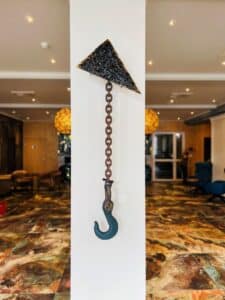
Behind it is a 14 sq. m installation depicting three cranes. The used, old chains echo the winches on the industrial cranes – a familiar sight in our city. The sun’s reflection on the cranes repeats itself in the glittering glass shards used in the construction.
The background of the installation is reminiscent of Klaipeda’s sunsets when the sky turns from bright orange to more muted colours – warm and glowing behind the ever-present cranes. To create this landscape, I used six shades of brown, three shades of green, bright blue and clear glass bottles. The bottles have more than thirty different shapes which form the three different areas of the background: the evening sky, the waterfront and the strip of sea.
The bottles are individually mounted on the wall at different heights, and with a space behind them, to emulate the movement of the sea and the air. The composition of the bottles also replicates the waves in the sea, and its uneven surface.
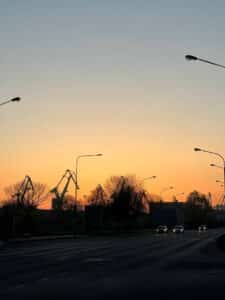
Third installation reflects elements of Klaipeda’s old architecture which is a unique method of timber framing, called fachwerk. This is the type of house construction, when the frame is made of horizontal and vertical elements of wooden beams. I use a similar principle when creating a crane from welded old chains. Crane’s winch is made from broken blue bottles. The crane is depicted succinctly, but accurately enough to recognize its form. This is another key feature of my work: used industrial design elements that need change and meaning, in this case chains become cranes.
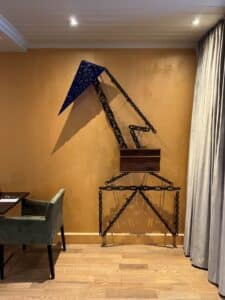
The fourth installation is on the wall of the restaurant. It depicts the waves of the sea forming a background to three stylized cranes. The water is created from melted blue bottles and the undulating shapes mimic the waves. The cranes have lights mounted behind them, causing them to glow. They consist of clear shards of glass which resembles ice. This is a subtle nod to the fact that Klaipeda’s port is frost-free.
The sum of the works in the installation reflects my desire not to choose new materials for creation, but to create beauty paired with unexpected effect and harmony from used industrial design and household elements.
